Green infrastructure – natural resources and ecosystems as well as enhanced and engineered assets that reproduce natural functions – is critical for helping municipalities deliver and maintain levels of service for their communities, often at a lower cost than grey infrastructure alternatives. As the Canadian climate changes, protecting and managing green infrastructure is ever more vital, since it is a key tool for municipal adaptation to climate change.
This page outlines the resources available to municipalities to help improve understanding, valuation and management of green infrastructure in the context of climate change. The resources have been developed as part of the Municipalities for Climate Innovation Program (MCIP).
- Featured case studies, tools and other resources
-
Case studies and municipal examples
Tools, resources and articles
- Defining green infrastructure and natural assets
-
According to the Natural Assets Initiative (NAI):
Green infrastructure is a broad category that includes natural assets and designed and engineered elements that have been created to mimic natural functions and processes in the service of human interests. Rain gardens and urban parks are examples of enhanced assets, while green roofs and permeable pavement are examples of engineered assets.
Natural assets (also known as natural capital) are a subset of green infrastructure and the stock of natural resources and ecosystems, such as forests or wetlands, that yield a flow of benefits to people.
- Incorporating green infrastructure
-
Although most of the resources featured on this page pertain to natural assets, MCIP has also produced several green infrastructure resources. The Green Infrastructure Foundation worked with six Ontario communities on incorporating green infrastructure into site redevelopment plans; the organization also offers courses to support municipalities in building capacity to assess green infrastructure benefits.
MCIP has funded several green infrastructure projects. One example relating to enhanced assets is the stormwater management project in Port Burwell, ON. In rebuilding its storm sewer network, the municipality installed 100 metres of bioswale, a vegetated stormwater conveyance and filtration channel.
- Societal benefits derived from green infrastructure
-
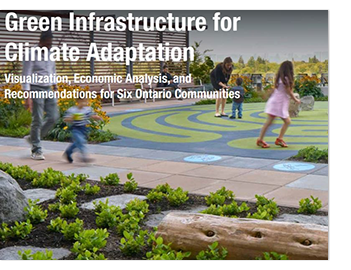
Green infrastructure is increasingly recognized as a vital ally in the fight against climate change, both from a greenhouse gas reduction perspective and, most critically for Canadian municipalities, from an adaptation perspective. Green infrastructure helps municipalities adapt to the impacts of climate change and maintain services for the community such as drinking water provision and stormwater management, often at a lower cost compared to engineered alternatives.
Green infrastructure provides a range of benefits, not all of which are easy to quantify. A comprehensive list of these benefits is included in the Green Infrastructure for Climate Adaptation Report, among them environmental (for example flood resilience and reduced energy consumption), economic (e.g. increases in employment, the lifespan of grey infrastructure and retail sales) and social (such as improved health and educational outcomes).
- Understanding and valuing the services natural assets provide
-
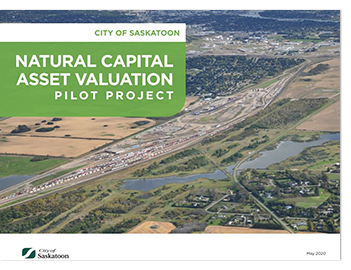
The first steps municipalities take in relation to natural assets centre around better understanding what these consist of, what condition they’re in and how climate change might impact them in the future. They also are about recognizing what role natural assets play in delivering services to the municipality and assigning a dollar value to them when possible.
MCIP funded a North Saskatchewan River Basin meta-analysis (and summary), outlining its current climate and hydrology, projected climate changes within the region and expected impacts on aspects such as streamflow and water quality.
Saskatoon, SK undertook a natural capital valuation project, first compiling an inventory of local natural assets and then selecting two areas for detailed valuation. The ecosystem services the two areas provide were identified and assigned a financial value, and results were then extrapolated to the entire inventory. The conservative estimate was that the city’s natural assets deliver $48.2 million per year in total value. In a webinar (minutes 32:55 to 50:23), the City of London, ON outlines how it used accounting metrics to value the city’s urban woodlands, explaining how metrics such as appreciation, depreciation and tangible assets were considered and a cost of asset replacement approach taken.
For Saskatoon and many other municipalities across Canada, one of the main barriers to formally calculating the value of natural assets is the Public Sector Accounting Board’s current prohibition against listing natural infrastructure as a capital asset. This acts as a disincentive and makes it harder for Canadian municipalities to establish consistent standards for financially valuing natural assets. It also makes it harder for a municipality to build a strong business case. Surrey, BC was able to create a strong business case for a coastal resilience project that included the development of new parkland, calculating that the project would yield a cost-benefit ratio of 1:126, providing total avoided damages of $23.5 billion over the lifecycle of the assets.
- Protecting and managing natural assets for climate adaptation and other benefits
-
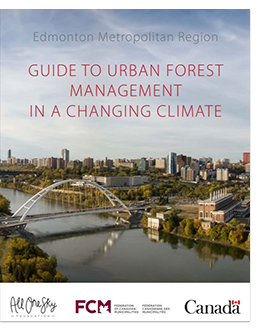
Once natural assets have been listed and mapped, their exposure to climate change impacts understood and their value measured, municipalities are able to integrate them into plans and strategies. Doing so ensures natural assets are protected, managed and able to continue delivering ecosystem services to communities.
The Rural Municipality of Springfield, MB depends wholly on groundwater for its water needs. Concerned about the potential impact of climate change on this vital natural asset, the municipality undertook a mapping exercise to inform a groundwater management plan.
Eight municipalities created climate adaptation plans as part of the MCIP-funded Adaptation Changemakers project, evaluating climate change impacts on natural systems (among others) and creating adaptation solutions to address these risks. Each adaptation plan is available online and summarized in the results document. Among the actions prioritized for protecting biodiversity and enhancing ecosystem functions: optimizing road salt use, enhancing urban forests, naturalizing shorelines and control of invasive species.
Several MCIP resources provide examples of and guidance for management options relating to natural assets. The All One Sky best practices for water management report summarizes green infrastructure-based approaches to address water quality and flooding, among other things. The organization’s urban forest management guide and summary includes a series of adaptation options relating to policy and planning, tree planting, plant care, risk management and engagement. Although intended for an Edmonton-area audience, many are relevant in other geographies.
Green development standards (GDS) can help municipalities manage increased demand on their resources by encouraging environmentally, socially and economically sustainable design. The GDS toolkit for new residential buildings guides municipalities in developing the key components of a GDS, including by providing sample GDS metrics covering green infrastructure such as tree canopy, soils and parks.
- Integrating green infrastructure into asset management
-
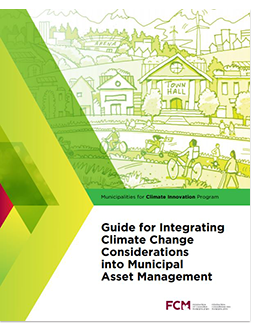
One specific way municipalities can manage natural assets for climate outcomes is by treating them like any other assets, integrating them into asset management plans and practices.
To help municipalities better understand the benefits of integrating green infrastructure into asset management planning, the Toronto and Region Conservation Authority presented some best practices and challenges during a webinar (minutes 04:49 to 31:58).
During the MCIP workshop series on the integration of climate change considerations into municipal asset management, the City of Grand Forks, BC, shared details about their novel flood resilience project which involves restoring the ability of the river’s floodplain to convey flood water by offering community land swaps to riverfront residents.
MCIP has supported municipalities in integrating climate considerations into asset management. This resource takes municipal staff on a learning journey starting with a short video and progressing to a detailed guide. The guide lays out a series of clear steps leading up to how to integrate climate change related actions into municipal asset management plans, with natural assets included throughout.
- Spotlight on: communities banking on healthy natural assets
-
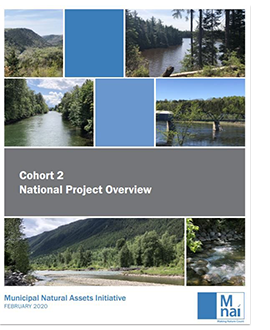
One set of MCIP resources links to all of the steps detailed above: those produced through a partnership between a group of six communities and NAI to understand how healthy natural assets can help address issues facing municipalities. Assessments revealed that natural assets such as ponds, forests and whole watersheds provide value of up to $400 million and benefit over 200,000 municipal residents.
The municipalities followed an eight-step methodology. This included defining the scope of the natural assets they would include, creating an inventory of natural assets using existing information, assessing their condition, conducting a risk assessment and quantifying the service levels the assets provide for the community. Through this asset management approach, the municipalities then developed operation and management plans based on existing conditions, risks, and desired service level trajectories.